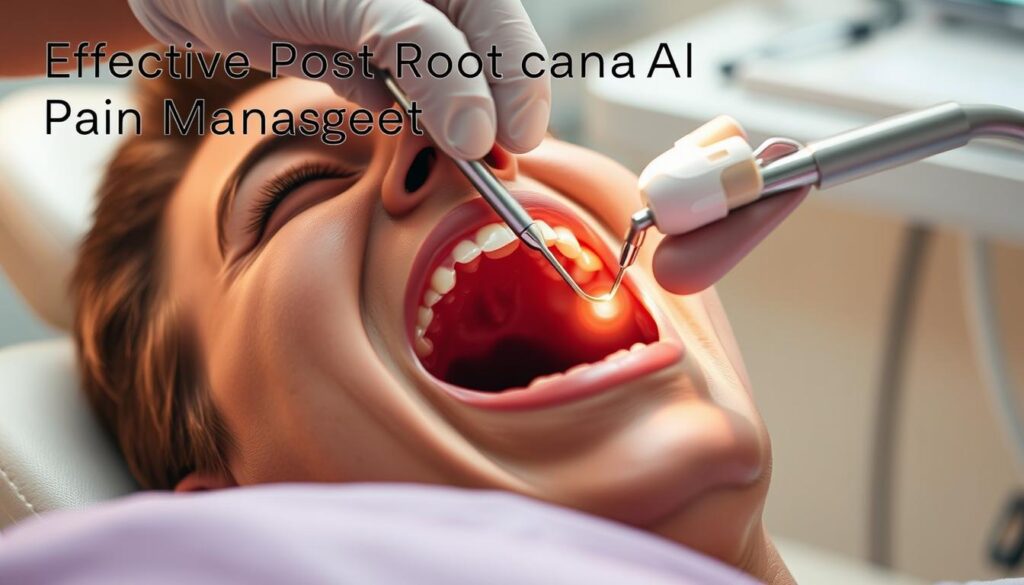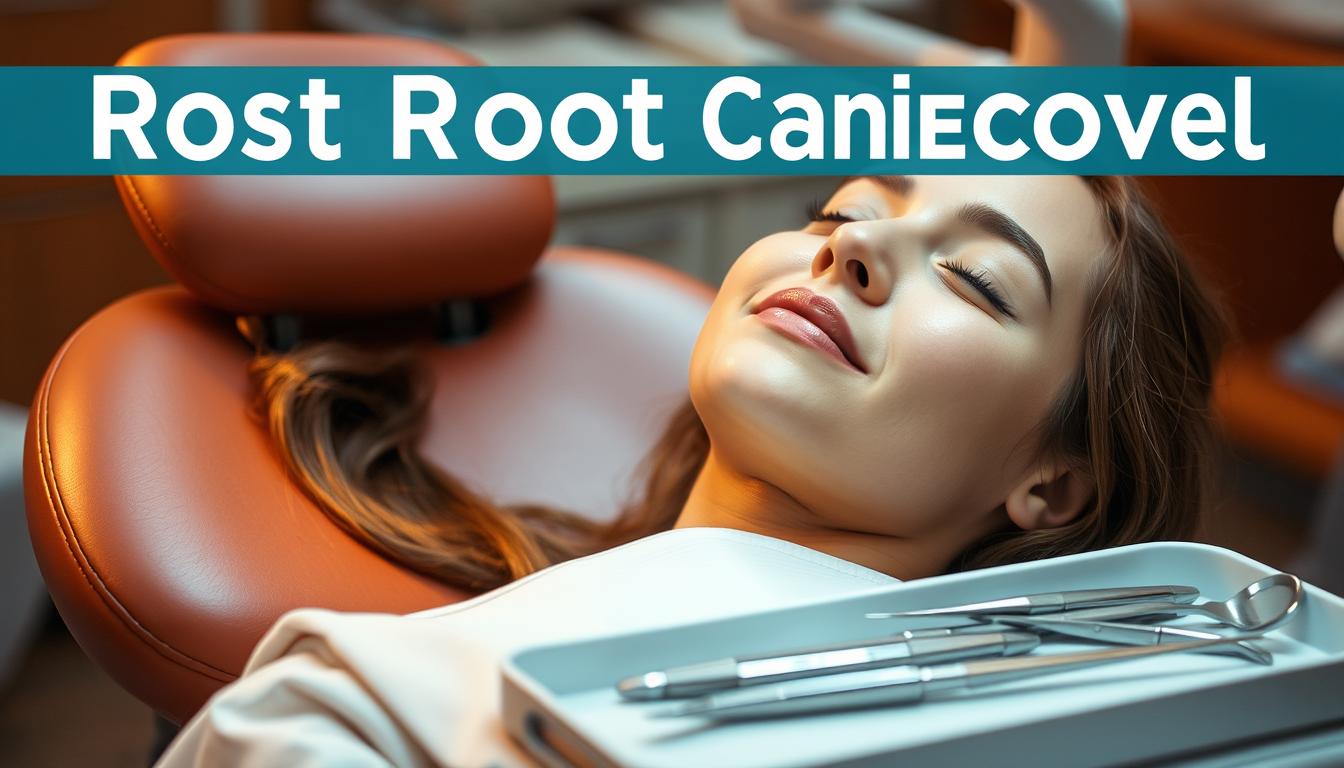Undergoing a root canal procedure can be a daunting experience for many. It’s a common dental treatment that saves millions of teeth each year in the United States. The thought of infected tooth pulp being removed and the canal being cleaned can be unsettling.
Understanding what to expect during the recovery process is crucial for a smooth healing journey. With modern techniques and proper aftercare, the discomfort associated with root canals can be significantly minimized. Knowing the stages of recovery and how to manage pain, dietary considerations, and oral hygiene can make a significant difference.
This comprehensive guide will walk you through each stage of the recovery journey, providing practical advice to promote healing and ensure the long-term success of the treatment.
Key Takeaways
- Understanding the root canal procedure and its aftermath is crucial for a smooth recovery.
- Modern root canal techniques minimize discomfort during recovery.
- Proper aftercare, including pain management and oral hygiene, is essential.
- Most patients can return to normal activities within a few days.
- A root canal is a common and effective treatment for saving infected teeth.
Understanding Root Canal Treatment
Understanding the root canal process is essential for patients to appreciate the importance of post-procedure care. Root canal therapy, also known as endodontic treatment, is a procedure performed to save a severely damaged or infected tooth. It involves removing the infected pulp from inside the tooth and cleaning out the root canals before filling them with a biocompatible material.
What Happens During a Root Canal Procedure
During the root canal procedure, your dentist or endodontist will administer local anesthesia to ensure comfort. They will then create an access hole in the tooth‘s surface to reach the pulp chamber and canals. Specialized tools are used to remove decayed tissue and bacteria from within.
Why Recovery Matters for Long-Term Success
Proper recovery after root canal treatment is crucial for the long-term success of the procedure and preservation of the natural tooth structure. Following recovery guidelines helps prevent complications such as reinfection or fracture of the treated tooth.
| Key Aspects | Description |
|---|---|
| Procedure | Removing infected pulp and cleaning root canals |
| Filling Material | Biocompatible material (gutta-percha) |
| Importance of Recovery | Prevents complications and ensures long-term success |
What to Expect in the First 24 Hours After Your Root Canal

Understanding what to expect after a root canal can help alleviate concerns and ensure a comfortable recovery. The first 24 hours are critical for proper healing and set the stage for your overall recovery experience.
Normal Post-Procedure Sensations
It’s normal to experience some discomfort and sensitivity after a root canal. Your dentist may prescribe pain medications or recommend over-the-counter options to manage any pain. You may also notice numbness for several hours due to the local anesthetic used during the procedure.
As the anesthetic wears off, you might feel mild to moderate discomfort or sensitivity in the treated tooth and surrounding area. Some patients may experience slight swelling around the treated tooth or in the adjacent cheek, which typically subsides within 24-48 hours.
When to Contact Your Dentist Immediately
If you experience severe pain that isn’t relieved by prescribed medications, or if you notice significant swelling that worsens after 48 hours, you should contact your dentist immediately. Additionally, if you have an allergic reaction to medications or if your temporary filling or crown comes loose or falls out, seek dental care right away.
Most patients can return to normal activities the day after the procedure, but it’s advisable to avoid strenuous exercise for 24 hours to prevent increased blood flow and potential worsening of pain or swelling.
Effective Post Root Canal Pain Management

Effective pain management is crucial after a root canal procedure to ensure a smooth and comfortable recovery. Managing pain effectively allows you to return to your normal activities more quickly.
Recommended Medications and Dosages
Your dentist will typically recommend specific over-the-counter pain medications such as ibuprofen (Advil, Motrin) or acetaminophen (Tylenol) at appropriate dosages based on your medical history and the extent of the procedure. For more significant discomfort, your dentist may prescribe stronger pain medication.
Natural Pain Relief Methods
Rinsing with warm salt water several times a day can help reduce inflammation and promote healing of the treated tooth. Elevating your head with extra pillows while sleeping can also help minimize discomfort.
Using Ice Packs to Reduce Swelling
Applying an ice pack to the outside of your face in the area of the treated tooth for 15-20 minutes at a time can significantly reduce swelling and provide natural pain relief during the first 24-48 hours.
Dietary Guidelines During Post Root Canal Recovery
Eating the right foods after a root canal can significantly impact your recovery and the overall health of the treated tooth. It’s essential to be mindful of your diet to avoid discomfort and ensure the longevity of the tooth.
Foods to Enjoy During Recovery
For the first few days after your root canal, focus on consuming soft foods that require minimal chewing. Opt for lukewarm or cool foods as extreme temperatures can trigger sensitivity. Recommended foods include yogurt, smoothies, mashed potatoes, scrambled eggs, pasta, fish, and well-cooked vegetables. These foods are gentle on the treated tooth and surrounding tissues, promoting a smooth recovery.
Foods and Beverages to Avoid
Avoid hard, crunchy, sticky, or very chewy foods and beverages that can irritate the healing tissues or damage the treated tooth. Examples include nuts, chips, raw vegetables, caramel, gummy candies, tough meats, and acidic items like citrus fruits or tomato-based foods. It’s also advisable to avoid alcohol during recovery as it can interact with pain medications.
Gradual Return to Normal Eating
As your recovery progresses, typically after 3-5 days, you can gradually reintroduce more solid foods into your diet. Pay attention to how your tooth responds and maintain good oral hygiene practices to ensure a smooth recovery and protect the treated tooth.
Maintaining Proper Oral Hygiene After a Root Canal
After undergoing a root canal, maintaining proper oral hygiene is crucial for the long-term success of the treatment. This involves a combination of gentle brushing, careful flossing, and the use of appropriate mouth rinses to prevent infection and promote healing.
Gentle Brushing Techniques
Begin brushing your teeth gently the same day as your root canal procedure, taking special care around the treated area to avoid causing discomfort or disturbing any temporary filling. Use a soft-bristled toothbrush and apply gentle pressure when brushing to clean all surfaces of your teeth without irritating your sensitive gums or the treated tooth.
Flossing Around the Treated Tooth
Flossing remains essential after a root canal, but special care should be taken around the treated tooth—slide the floss gently between teeth rather than snapping it down, which could disturb the healing area or temporary filling. For more detailed guidance on post-treatment care, you can visit https://www.aae.org/patients/your-office-visit/post-treatment-care/.
Recommended Mouth Rinses
Your dentist may recommend using an antimicrobial mouth rinse containing chlorhexidine or a warm salt water rinse (½ teaspoon salt in 8 ounces of water) several times daily to reduce bacteria and promote healing. It’s advisable to avoid alcohol-based mouth rinses during the initial recovery period as they can cause irritation and discomfort to healing tissues.
Follow-Up Care and Permanent Restoration
Root canal therapy isn’t complete without proper follow-up care and restoration. After undergoing a root canal procedure, it’s crucial to prioritize follow-up appointments with your dentist to ensure a smooth recovery and the long-term success of the treatment.
Importance of Follow-Up Appointments
Follow-up care after a root canal is essential for completing the treatment process. Most root canal therapy requires at least one follow-up appointment, typically scheduled 1-2 weeks after the initial procedure, to monitor healing and place a permanent restoration. During these appointments, your dentist will evaluate the treated tooth for any signs of persistent infection or inflammation.
Getting Your Permanent Crown or Filling
In most cases, a tooth that has undergone root canal treatment will need a permanent restoration, such as a crown or filling, to protect it from fracture and restore full functionality. The type of restoration recommended depends on the location of the treated tooth and the extent of damage. Getting your permanent restoration placed in a timely manner is critical to prevent recontamination or fracture of the tooth.
Long-Term Care for Your Treated Tooth
Long-term care for a tooth that has had root canal therapy includes regular brushing and flossing, routine dental check-ups, and avoiding damaging behaviors. With proper care, a tooth that has undergone root canal treatment can last as long as your natural teeth and function just as effectively.
| Care Aspect | Description | Benefit |
|---|---|---|
| Regular Brushing | Daily cleaning with fluoride toothpaste | Prevents plaque buildup |
| Flossing | Daily removal of food particles | Reduces risk of infection |
| Routine Check-ups | Regular dental visits | Ensures early detection of issues |
Conclusion: Ensuring a Successful Recovery and Long-Term Tooth Health
Ensuring a successful recovery after a root canal involves a combination of proper care, follow-up appointments, and good oral hygiene practices. The recovery process typically spans several days to a week, during which time you may experience mild discomfort that gradually subsides as the treated area heals.
Understanding that root canal therapy is designed to save your natural tooth and prevent the need for extraction can help you appreciate the importance of following through with all aspects of treatment. This includes getting the permanent restoration, which is crucial for the long-term success of the procedure.
By following the guidelines outlined in this article regarding pain management, dietary choices, and follow-up care, you can ensure the best possible outcome for your treated tooth. With proper care and oral hygiene, a tooth that has undergone root canal therapy can remain functional for a lifetime.
Maintaining good oral hygiene and attending regular dental check-ups are essential for the longevity of the treated tooth. By doing so, you can enjoy a healthy, functional smile for years to come.


